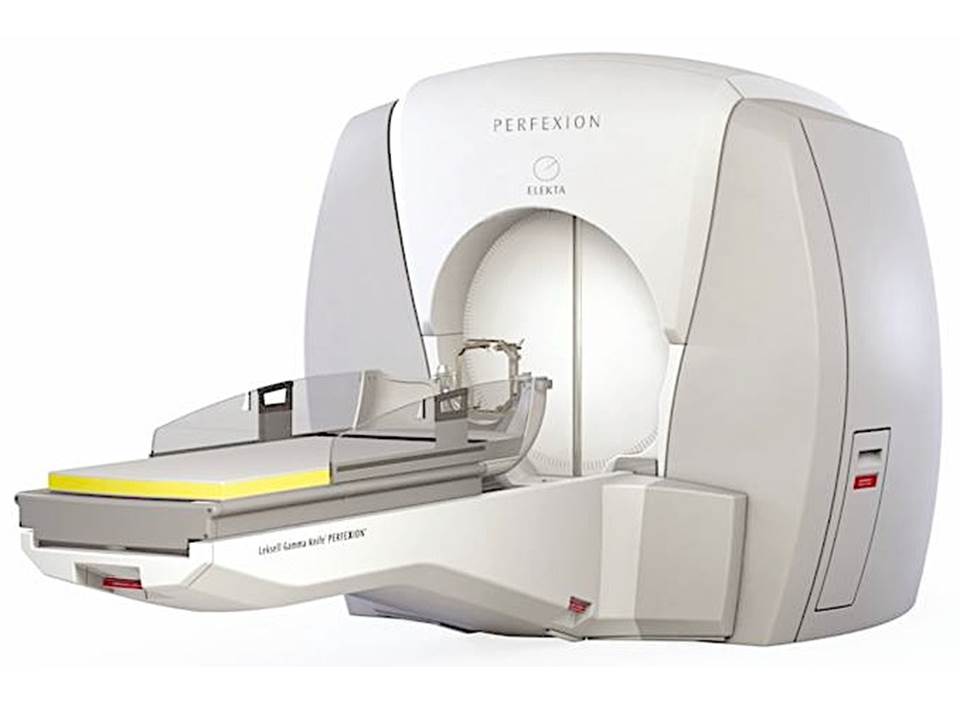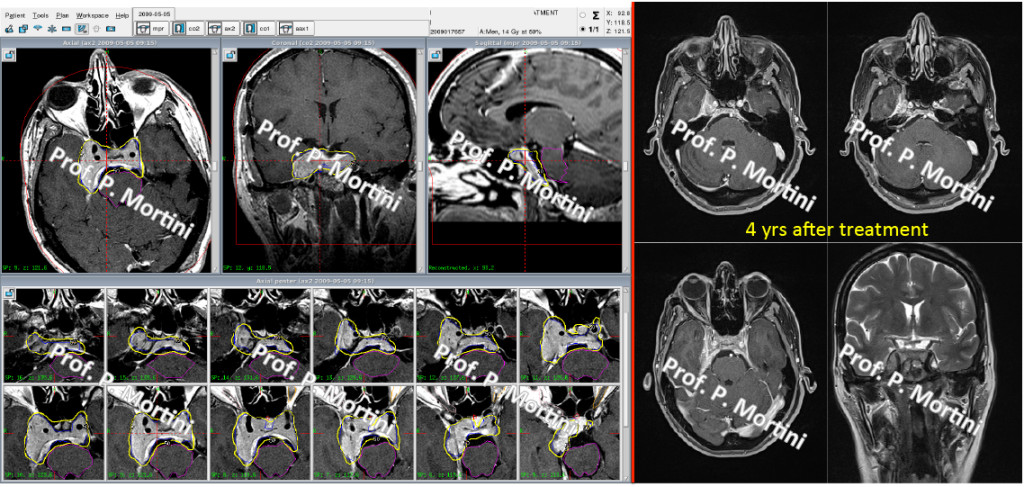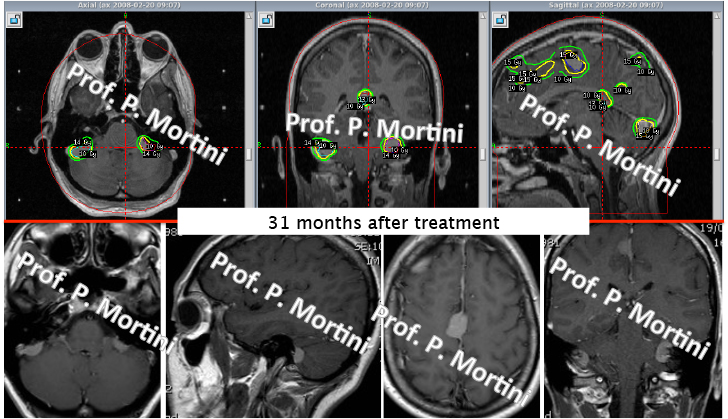Stereotactic Radiosurgery is a precise form of therapeutic radiology that uses intense doses of radiation without a surgical incision or opening.
It is called “surgery” because a result similar to an actual surgical procedure is created by the radiation therapy treatment. The beams of radiation are precisely focused to reach the tumor, lesion, or other area being treated with minimal effect on surrounding healthy tissue.
Radiosurgery may be used in situations where the brain lesion cannot be reached by conventional surgical techniques.
It may also be used in persons whose condition is such that they might not be able to tolerate a surgical procedure, such as craniotomy, to treat their condition.
Radiosurgery works in the same manner as other types of therapeutic radiology: it distorts or destroys the DNA of tumor cells, causing them to be unable to reproduce and grow. The tumor will shrink in size over time.
For blood vessel lesions such as an arteriovenous malformation (AVM), the blood vessels eventually close off after treatment.
Radiosurgery almost always involves a treatment team approach. The treatment team generally includes a radiation oncologist (a physician specializing in radiation treatment for cancer), a neurosurgeon and/or a neuroradiologist, a radiation therapist, and a dedicated nurse.
In addition, a medical physicist and a dosimetrist work together to calculate the precise number of exposures and beam placement necessary to obtain the radiation dose that is prescribed by the radiation oncologist. Your treatment team may include other healthcare professionals in addition to or in place of those listed here.
There are three types of radiosurgery systems. They are:
Gamma Knife system
The Gamma Knife system uses beams of highly-focused gamma rays to treat small to medium size lesions, usually in the brain.
Many beams of gamma radiation join to focus on the lesion under treatment. Gamma Knife radiosurgery is most often used to treat tumors and other lesions in the brain.
It is also used to treat certain neurological conditions, such as trigeminal neuralgia (a condition in which pressure on the trigeminal nerve causes spasms of extreme facial pain) and acoustic neuroma (a noncancerous tumor in the brain that affects the nerves that control hearing).
Linear accelerator (LINAC) systems
Linear accelerator (LINAC) systems use high-energy x-rays to treat a tumor or other lesion. In addition to using x-rays rather than gamma rays, LINAC systems also differ from the Gamma Knife in that the machinery moves around the patient during treatment. For this reason, LINAC systems are able to treat larger tumors and larger affected areas than the Gamma Knife. Areas other than the brain can be treated with a LINAC system.
Proton beam therapy or cyclotron
Proton beam therapy is a type of particle beam radiation therapy. Rather than using rays of radiation, such as gamma rays or x-rays, particle beam therapy uses particles such as protons or neutrons. Proton beam therapy is the most widely-used type of particle beam therapy. Proton beam therapy may be used for radiosurgery procedures or for fractionated radiotherapy (several smaller doses of radiation over a certain period of time).
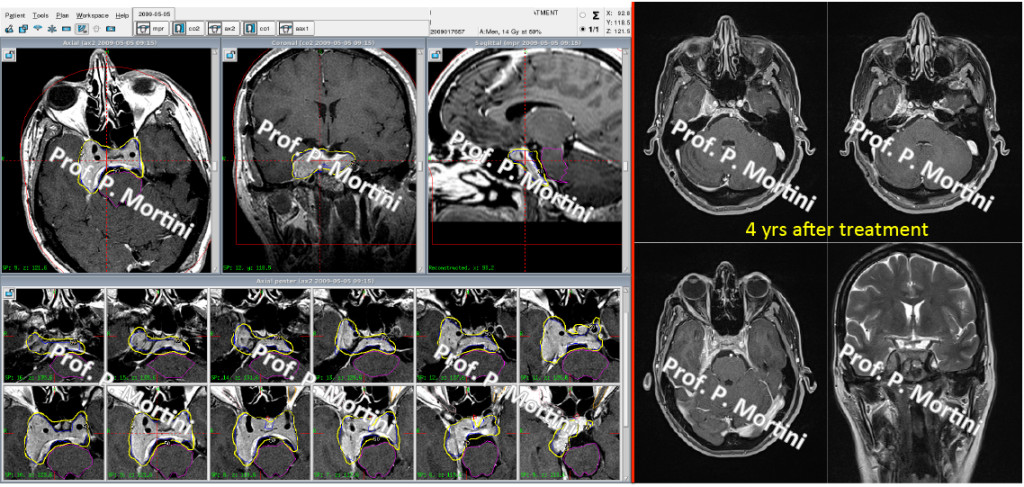
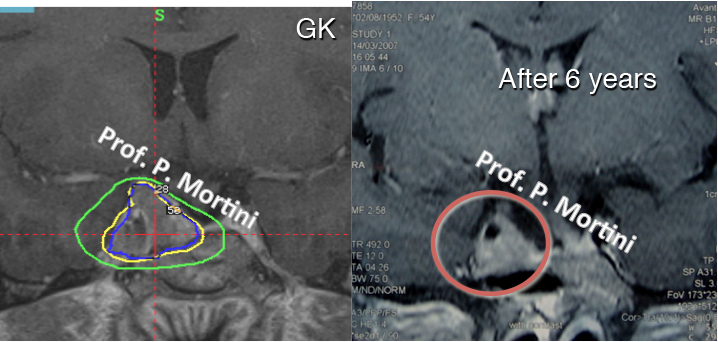
 English
English Italiano
Italiano